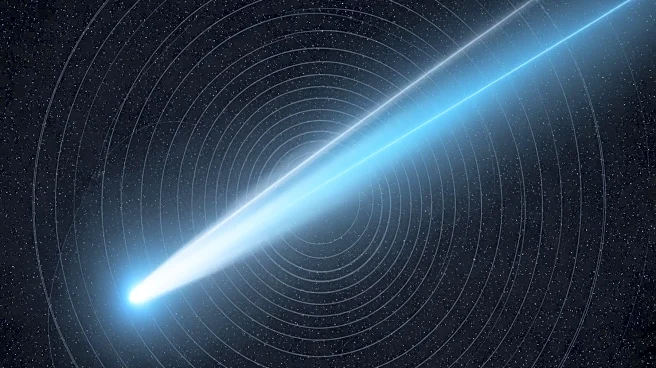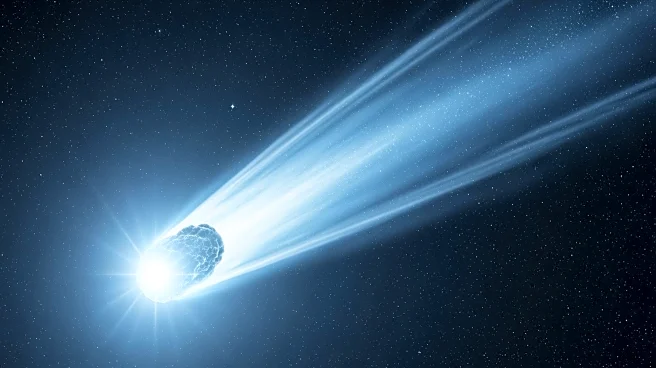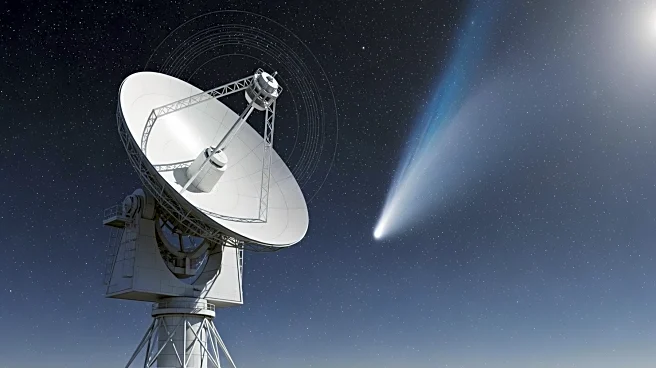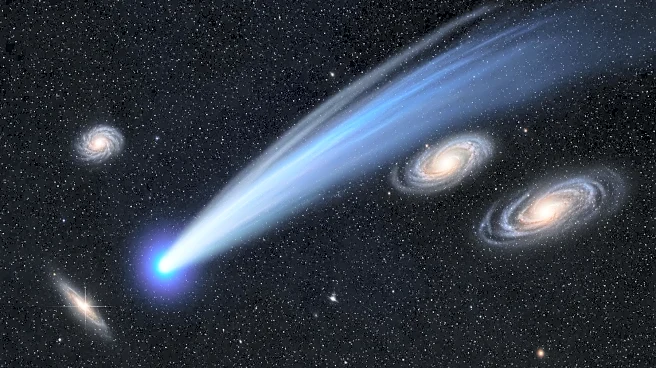What's Happening?
Interstellar comet 3I/ATLAS, discovered on July 1, 2025, is currently visible in the sky, but only through telescopes. The comet, originating from outside the Solar System, is on a hyperbolic orbit and
will not return once it leaves. It recently passed closest to the Sun and is now visible in the constellation Virgo, moving towards Leo. Despite its scientific significance, 3I/ATLAS is too faint to be seen with the naked eye or ordinary cameras. Skywatchers can observe it using telescopes with at least an 8-inch aperture or smart telescopes that can stack images. The comet's closest approach to Earth will be on December 19, 2025, at a distance of about 1.8 AU, posing no threat.
Why It's Important?
The visibility of comet 3I/ATLAS offers a unique opportunity for astronomers to study an interstellar object, providing insights into comet chemistry from another star system. Although it is not visible to the naked eye, the comet's presence in the sky allows for detailed observations using advanced telescopic equipment. This contributes to the understanding of interstellar comets and their behavior, enhancing scientific knowledge of objects that travel through the Solar System from distant origins. The study of 3I/ATLAS can inform future research and exploration missions, highlighting the importance of technological advancements in astronomy.
What's Next?
As 3I/ATLAS continues its journey through the Solar System, astronomers will monitor its path and behavior using various telescopes and imaging setups. The comet will remain a target for scientific observation until it fades and exits the Solar System. Researchers will analyze data collected during its visibility period to gain further insights into its composition and dynamics. The ongoing study of interstellar comets like 3I/ATLAS will contribute to the broader understanding of cosmic phenomena and the potential for future discoveries.
Beyond the Headlines
The study of 3I/ATLAS highlights the challenges and opportunities in observing interstellar objects. It underscores the importance of advanced imaging techniques and equipment in capturing faint celestial phenomena. The comet's journey through the Solar System serves as a reminder of the vastness of space and the potential for discovering new and intriguing objects that originate from beyond our solar neighborhood.











